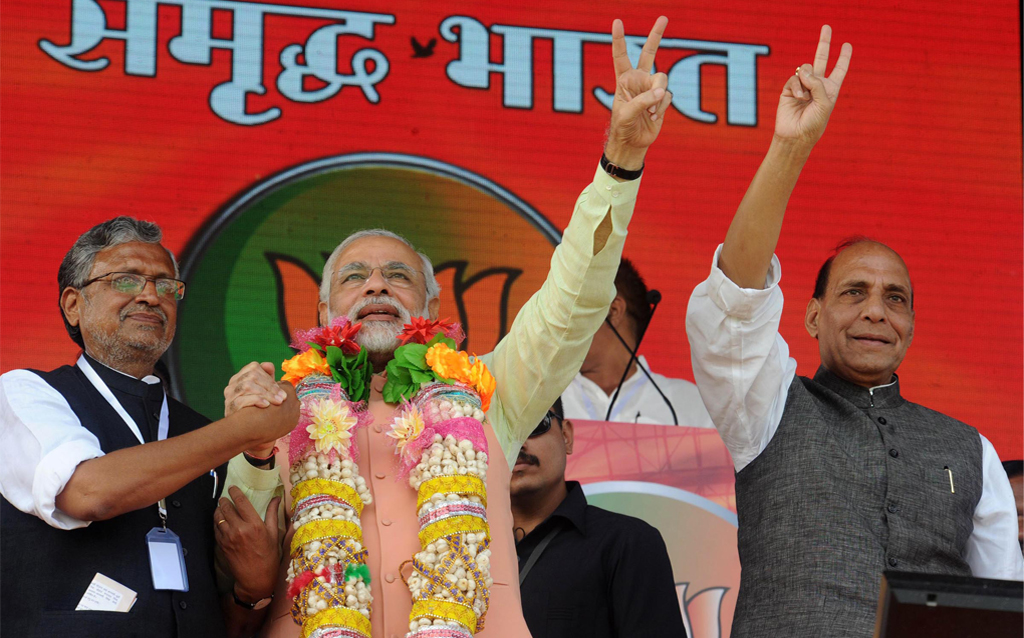
Chinese transgressions into Indian Territory along the Line of Actual Control (LAC) have become more frequent and violent since the Doklam crisis in 2017. Given the crucial role Sino-Indian relations play in shaping security and geopolitics in South Asia, analysts in India and abroad have explored the motivations driving Beijing’s aggression across the LAC. In addition to shifts in Beijing’s strategic thinking, India’s own domestic political landscape may further enable Chinese transgressions.
Currently, there are 23 ‘areas of differing perception’ (ADPs) along the LAC. These areas are now increasing, despite more than 22 rounds of meetings with the Special Representatives (SR) of the India-China Boundary settlement group. More worrisome is that the SR-level talks have been discontinued since the Galwan valley incident in 2020. After Doklam in 2017, there was a brief pause followed by an escalation of the border crisis in scale and intensity in May 2020 at the banks of Pangong Tso and the adjoining areas of the Eastern Ladakh sector. The recent Tawang incident is a continuum of Chinese aggression to violate shared LAC norms.
India’s failure to develop a cohesive, concrete, and clear policy on China only further encourages such transgressions.
Currently, the border crisis is a clear indication of China’s offensive intentions as it attempts to change the status quo on the LAC. India’s failure to develop a cohesive, concrete, and clear policy on China only further encourages such transgressions. However, it faces serious domestic political challenges to developing a strategy to deter Chinese aggression, resulting in India being stuck between a rock and a hard place.
Major Reasons behind China’s LAC Violations
Previous studies survey a range of factors that drive Beijing to violate the LAC and disrupt the tranquility of the region. Russell Goldman states that India’s disruption to Chinese infrastructure in August 2017 at Doklam provoked China to escalate its infrastructure build-up and violations. China insists that the LAC violations are a by-product of the development rivalry between India and China at the frontier. Gamble and Davis argue that India’s military advancements in Eastern Ladakh have provoked China to violate the status quo on the LAC. Others underline that India’s decision to abolish Article 370 in Jammu and Kashmir (J&K) has aggravated Chinese violations, as they fear that India’s integration of Kashmir will have spillover effects in other contested borderland regions, namely Tibet and Xinjiang. Moreover, China is grabbing land in the LAC region to expand the Karakoram highway to ensure strategic connectivity to West Asia and Afghanistan via the disputed territory of the J&K.
Some reports have also linked more recent Chinese violations to U.S.-India military cooperation in the Himalayan region. India’s active participation in the Indo-Pacific and with the Quad has aggravated China. The immediate cause of the recent violation of the LAC in Arunachal Pradesh has been attributed to the Indian government’s announcement of the development of the Arunachal Frontier Highway as well as China’s attempts to complicate India’s G-20 presidency.
Despite this range of Chinese motives to violate the LAC, New Delhi’s approach to LAC plays as important a role in Beijing’s strategic calculus, further enabling violations.
Indian Political Leadership’s Approach to China
India’s territorial integrity has historically garnered significant public attention, and shaped the electoral calculus of major political parties. For example, in his path to power, Prime Minister Narendra Modi billed himself in opposition to the Indian National Congress Party’s soft approach to India’s territorial integrity. The Bhartiya Janata Party (BJP) claims that the Indian National Congress has continuously lost territory in J&K since the Nehru era. It is undeniable that Nehru’s notion of Asian brotherhood led to his relatively soft approach towards China. However, despite rhetoric, Prime Minister Modi’s softness and diplomatic approach towards China follows in Nehru’s footsteps. Even as Modi assured the nation that India’s sovereignty would not be compromised, his government has proved insufficient in preventing Chinese incursions and land grabs in disputed territories. The BJP government has hardly changed the rules of engagement (RoE) on the LAC. Moreover, we see no adequate retaliation against the recent provocations in Tawang. In the absence of meaningful political costs, Beijing has emerged from the border clashes largely unscathed, emboldening future actions.

The Modi government has made a huge diplomatic investment to improve relations with China since he has been at the helm of affairs. Despite this, he has had less success and more setbacks in recent years. Moreover, Modi’s mixed signals towards China, despite his image as a strong and decisive leader, have puzzled both the Indian electorate and India’s strategic partners. The Indian Ministry of Defense and the Ministry of External Affairs have issued very mild statements against China on the LAC violations, allowing China to take full advantage of the crisis by generating favorable support from small neighboring countries. Simultaneously, the absence of a clearly articulated Indian strategy on China makes India’s strategic partners skeptical of its intent and capabilities, leading to a double loss on the international front for India.
There are two main reasons for the BJP’s denial and silence on Chinese incursions. The first is to appease India’s domestic constituencies. For instance, at the all-party meeting in 2020, PM Modi stated that ‘no one has intruded into our territory’ to avoid domestic panic and assure the nation of his ability to protect India’s sovereignty. Shivshankar Menon underlined that the PM’s statement was inaccurate and ill considered. Indian appeasement was further covered through banning the dissemination of accurate reporting and prohibiting journalists and international analysts from visiting the forward strategic locations. This denial serves India’s domestic political constituencies by mitigating anti-government sentiments and public criticism on India’s inability to manage the situation on the LAC, especially in light of the 2024 general elections.
Second, India recognizes that a strong military response to these provocations is neither desirable nor feasible, given asymmetric military capabilities and economic dependency on China. If the Indian public were to recognize the true extent of the Chinese threat, they may encourage the BJP government to go on the offensive with China, without realizing the asymmetries at play. However, while the BJP may have logical backing for its public denial of the LAC incursions, Indian silence will only further Chinese opportunistic aggression on the LAC. Therefore, better defense preparedness, credible signaling, and effective changes in patrolling procedures are necessary to deter Chinese aggression. The absence of these reforms gives China the license to provoke the LAC as an opportunity to test Modi’s redlines, tarnish his global image, and limit horizons of a strategic partnership with Western powers.
The Way Forward
Denial is a dangerous strategy. There have been six parliamentary sessions since September 2020, yet not a single discussion on India’s China strategy. The 17th round of Military Corps Commander Level dialogue, so far, has failed to break the impasse between the two sides. From a geopsychological perspective, the more LAC violations there are without an Indian response, the further China succeeds in infusing fear and a sense of weakness into the Indian establishment.
From a geopsychological perspective, the more LAC violations there are without an Indian response, the further China succeeds in infusing fear and a sense of weakness into the Indian establishment.
In this context, India’s approach to China thus far has been more for the BJP’s electoral benefit than a holistic policy strategy for the nation. A coherent China policy would encompass a cementing of strategic ties with the United States vis-à-vis China, an opening of the Indian market to provide alternatives to other countries to reduce global dependence on China, a greater flow of resources to strategic locations on the LAC, and no further denial of Chinese aggression to the Indian public and international partners. Furthermore, India should be open in its criticism of China’s genocidal activities in Xinjiang and its transgression of international norms in continental and maritime domains, at various multilateral forums. The absence of such a strategy would only motivate further Chinese aggressions on the LAC, in the context of upcoming parliamentary elections next year.
***
Click here to read this article in Urdu.
Image 1: India-China border via Flickr
Image 2: Modi at Hunker Rally via Wikimedia Commons


